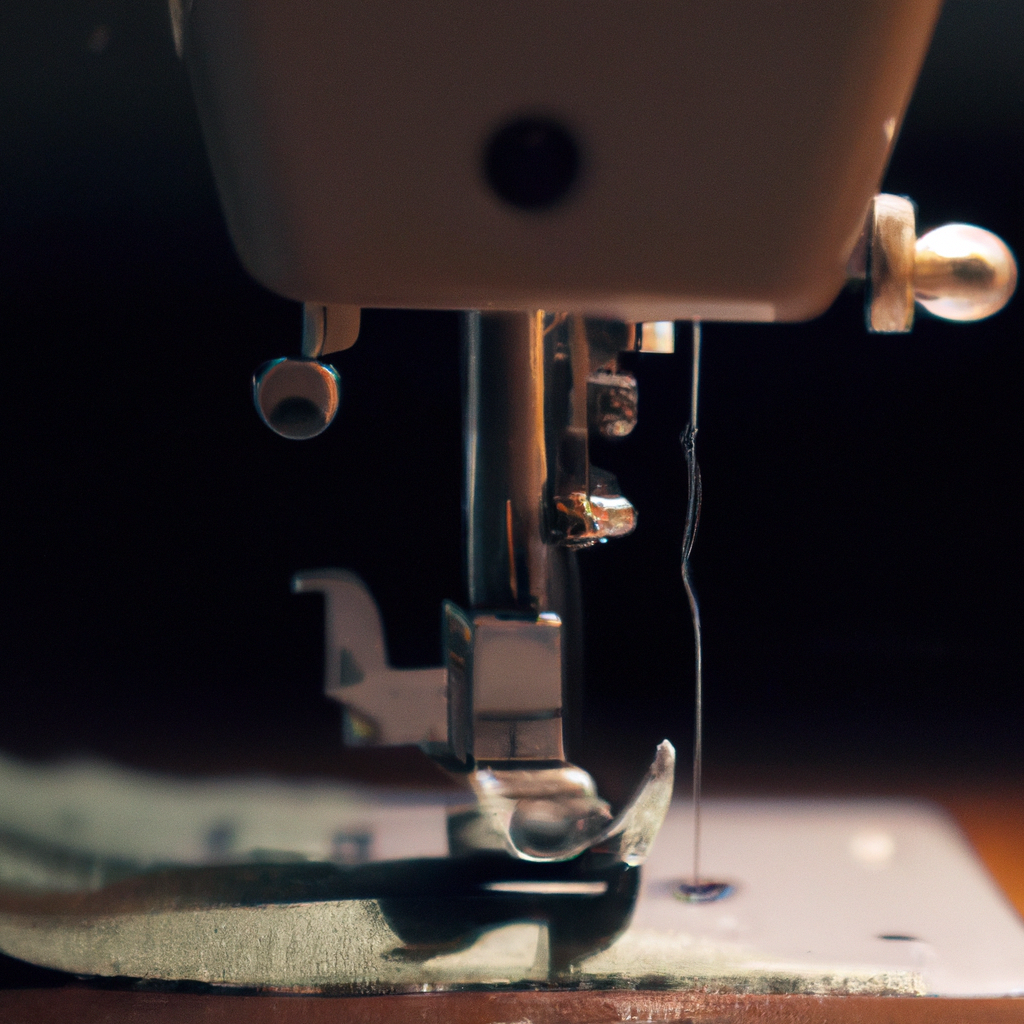Sewing is an essential skill that has been around for centuries. The invention of the sewing machine in 1790 revolutionized the way people sewed, making it faster and easier than ever before. One of the most critical aspects of sewing is creating stitches, and understanding how a sewing machine creates stitches is essential for anyone who wants to learn how to sew. In this article, we will explore the process of how a sewing machine creates stitches, including the different types of stitches and sewing techniques used to create them.
Types of Stitches
Before we dive into how a sewing machine creates stitches, let’s start with the basics. There are several types of stitches that a sewing machine can create, including:
1. Straight Stitch – A straight stitch is the most basic stitch used in sewing. It is created by sewing in a straight line, with each stitch going in the same direction.
2. Zigzag Stitch – A zigzag stitch is created by sewing back and forth in a zigzag pattern. This stitch is commonly used for finishing edges or creating stretchy seams.
3. Buttonhole Stitch – A buttonhole stitch is used to create a buttonhole in a garment. It is a series of closely spaced zigzag stitches that are sewn in a rectangular shape.
4. Blind Hem Stitch – A blind hem stitch is used to create a nearly invisible hem on a garment. It is created by sewing a straight stitch and then a zigzag stitch, with the zigzag stitch catching only a few threads of the garment.
How a Sewing Machine Creates Stitches
Now that we know the different types of stitches let’s explore how a sewing machine creates them. A sewing machine has several critical components that work together to create stitches, including:
1. Needle – The needle is the part of the sewing machine that creates the stitch. It is a slender, pointed metal rod that moves up and down through the fabric.
2. Bobbin – The bobbin is a small spool of thread that sits underneath the needle plate. The bobbin thread is used to create the bottom of the stitch.
3. Feed Dogs – The feed dogs are a set of metal teeth that move the fabric through the machine. They work in conjunction with the presser foot to move the fabric smoothly and evenly through the machine.
4. Tension Discs – The tension discs are two small metal plates that control the tension of the thread. They work together to keep the thread tight and prevent it from breaking while sewing.
When the sewing machine is turned on, the needle moves up and down, creating a loop of thread that is caught by the bobbin thread. As the fabric is moved through the machine by the feed dogs, the needle and bobbin thread create a stitch that holds the fabric together.
Sewing Techniques and Tips
Now that we understand the basics of how a sewing machine creates stitches, let’s explore some sewing techniques and tips that can help create beautiful and professional-looking stitches.
1. Use the correct needle – Different fabrics require different needles. Using the wrong needle can cause your stitches to be uneven or cause the thread to break.
2. Adjust the tension – If your stitches are too loose or too tight, adjusting the tension can help. Experiment with different tension settings until you find the perfect one for your fabric.
3. Use the right thread – Using the right thread can make a big difference in the quality of your stitches. Use high-quality thread that is appropriate for your fabric.
4. Practice, practice, practice – Sewing takes practice. Don’t get discouraged if your stitches aren’t perfect right away. Keep practicing, and you will improve with time.
Sewing Projects for Beginners
If you’re new to sewing, there are many simple sewing projects that you can try to help you practice your stitching skills. Some beginner-friendly projects include:
1. Pillowcases – Pillowcases are a great first project because they are simple and don’t require a lot of fabric.
2. Drawstring bags – Drawstring bags are another easy project that is perfect for beginners. They are great for storing small items or for use as a gift bag.
3. Aprons – Aprons are a bit more challenging, but they are still a great project for beginners. They can be customized to fit any size or style preference.
Conclusion
Knowing how a sewing machine creates stitches is essential for anyone who wants to learn how to sew. By understanding the different types of stitches, the components of a sewing machine, and sewing techniques and tips, you can create beautiful and professional-looking stitches. With practice and patience, you can take your sewing skills to the next level and tackle more challenging sewing projects.







